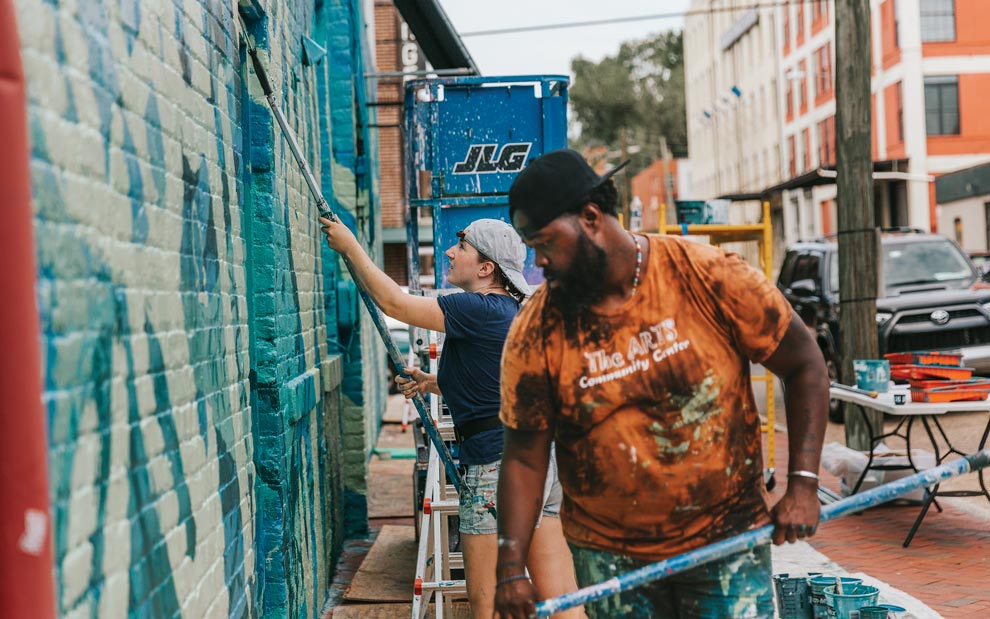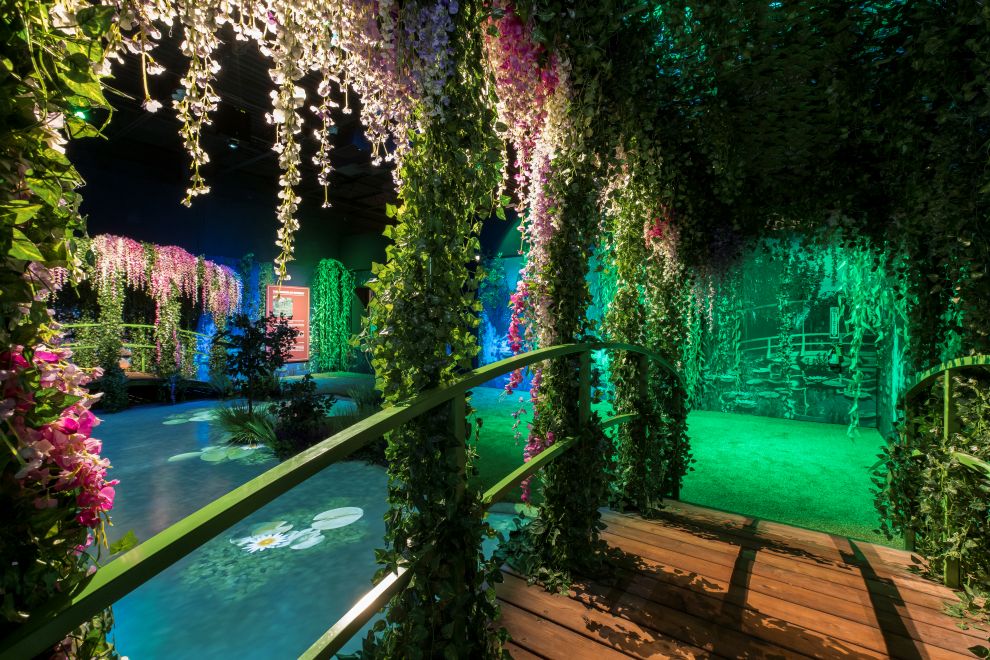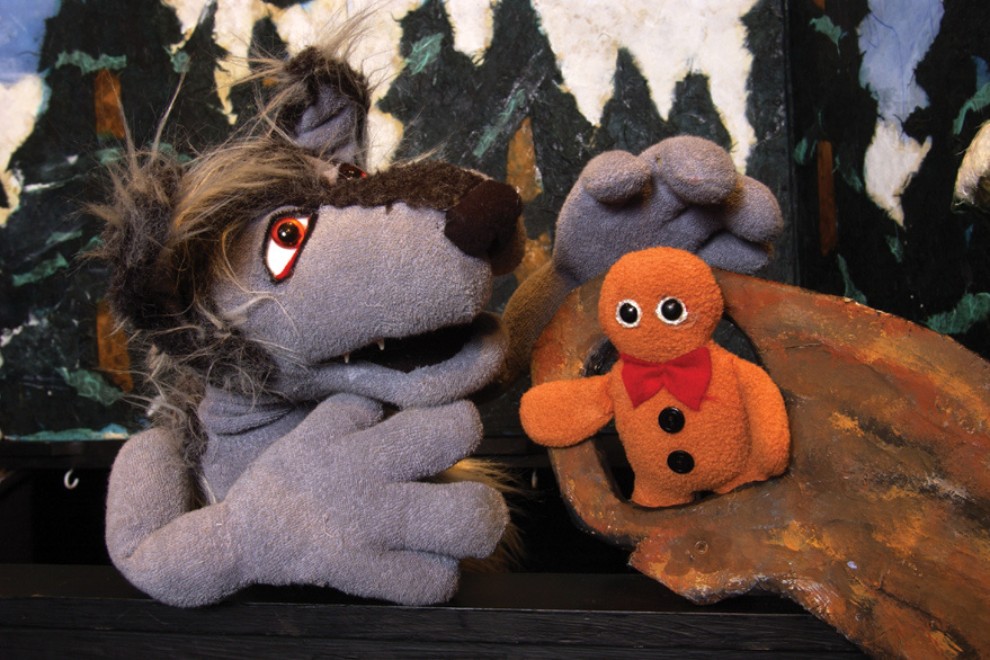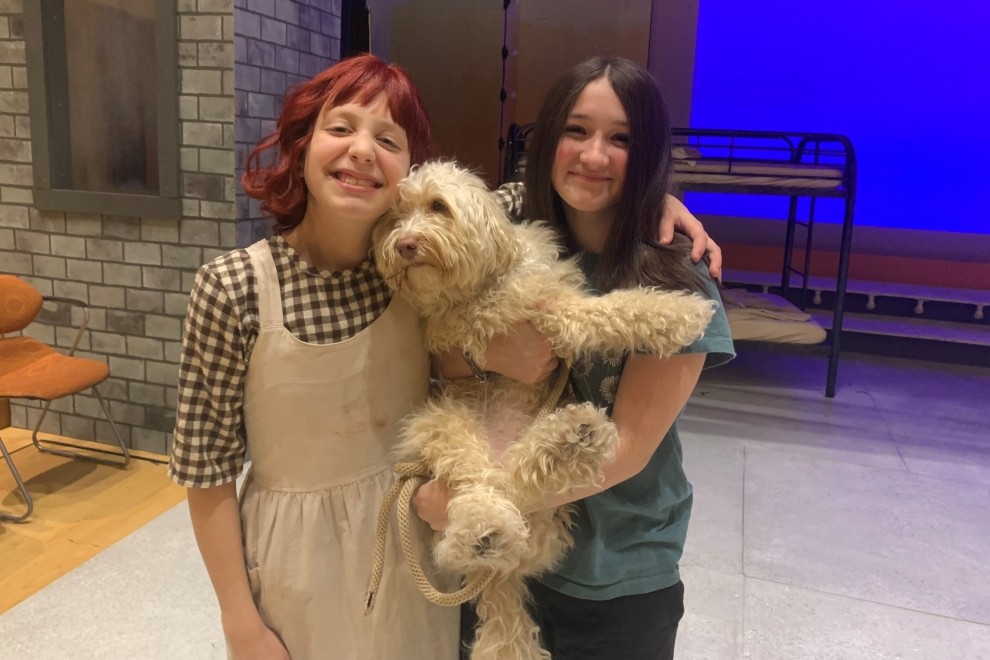In late spring of 2020, Richmond artists Amiri Richardson-Keys and Emily Herr were trying to figure out where they belonged amidst the demonstrations and protests for racial justice. George Floyd’s murder in Minneapolis had compelled people in Richmond and around the world to reckon with the broad impacts of systemic racism, its symbols on our city streets, and police brutality – all while managing social isolation because of the pandemic.
“As an African-American artist, I felt as though I had a duty to capture what was happening, not only within our community, but also what was happening around the world with the unfair treatment of people of color,” says Richardson-Keys.
When both artists heard about Mending Walls, a public art project from renowned muralist Hamilton Glass, they were fascinated about the concept of pairing artists from different backgrounds. “[Mending Walls was] a direct avenue to do something proactive and to help [the community] have a chance to be part of something proactive as well,” says Herr. “It felt amazing to make this huge work of public art using such a collaborative process [and explore] real issues with art… not just decorating a space or selling someone’s product.”
Before Mending Walls, Herr and Richardson-Keys hadn’t worked together. Although the artists had very different experiences in the art world and in life in general, according to Richardson-Keys, the pair would soon find themselves collaborating closely to put a conversation on a wall using art.
“It was a genius concept, and it was a [way to start] conversations between individual artists who may not have had an opportunity to work together or even had the same opportunities as artists,” says Richardson-Keys. “It allowed us as artists to see into each other’s lives and gain a different perspective.”
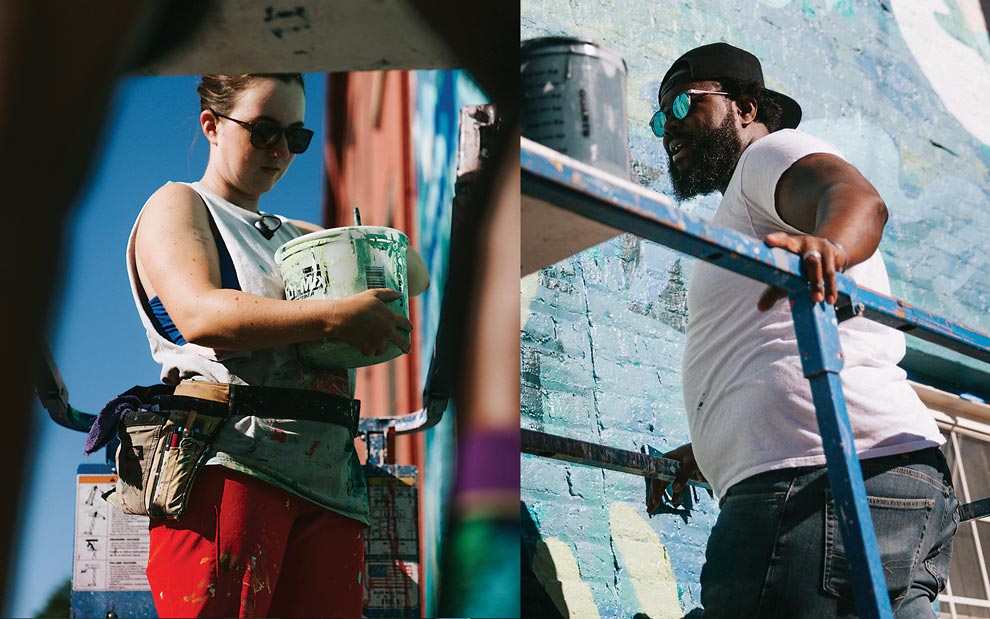
Mending Walls Origin Story
Mending Walls is a collaborative, community-engaged public art project that connects community members from different backgrounds in conversation to foster empathy, understanding, and healing.
The project was conceived in June 2020 after a conversation between good friends and artists Hamilton Glass and Matt Lively. Glass says during a talk about the murder of George Floyd, the men began to more fully realize their differences in experiences and perspectives. “Matt and I usually spend days at a time on lifts [creating art], and all we usually talk about are family, art, and football – not about race or social justice,” says Glass. “George Floyd changed that for us.”
Soon after that, Glass spoke to longtime partner Vanessa Diamond, who heads up civic engagement for the Community Foundation. At the time, Glass and Lively were working on another collaborative initiative in Richmond, All In Together, which was designed to connect people during the initial pandemic lockdown. Diamond went back to colleagues at The Community Foundation to raise support – structural and financial – for what would eventually become Mending Walls.
The talk with Diamond moved Glass. “I walked away inspired to create a project through art for people to engage in meaningful conversation that made space for connection and empathy with people from backgrounds different than their own, whether they were friends or strangers,” says Glass.
During an online search for names, Hamilton happened upon a poem by Robert Frost. “Mending Wall” tells the story of a relationship between two neighbors who meet annually to repair the wall that divides their properties. The poem explores the various ways that people and nature create borders and boundaries that separate, rather than unite.
With the Mending Walls name established, Glass called on artists and building owners to be part of the public art project. Glass says the response was amazing. “What was surprising was that some building owners would not only donate their wall, but they also donated to fund the creation of another mural at a different location,” says Glass.
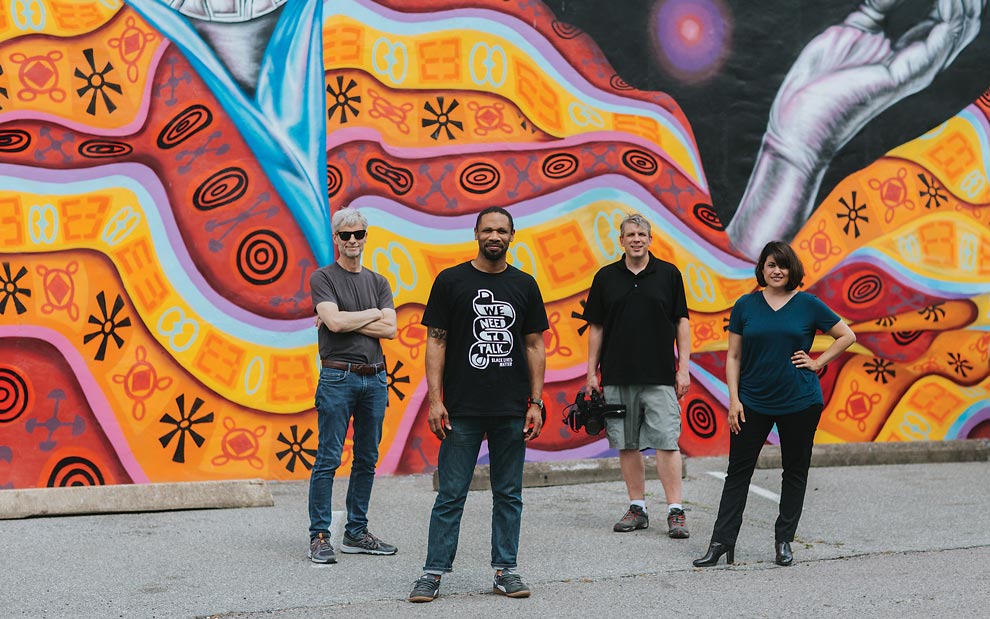
Pairing Artist, Painting Walls
Working through personal connections and social media, Glass compiled a large roster of interested artists who would be mixed and matched based on race, experience, and artistic style.
When Richardson-Keys and Herr received the call to participate, they were both active in their respective communities. Richardson-Keys, the co-creator of The Arts Community Center in Midlothian with his wife Cindy, was part of a group of artists who had painted a mural at The Valentine commissioned by Afrikana Film Festival. The mural honored women of color who were victims of police violence. Herr was working with RVA Makers to create PPE and masks for health care workers in the region in the early months of the pandemic.
Once Herr and Richardson-keys developed a mural concept, their first day at the wall involved volunteers. Community members signed up through HandsOn Greater Richmond to support the artists in the early stages of painting. During the pandemic, this outdoor opportunity allowed people to connect with others in a safer fashion.
“There were some great conversations that came from the volunteers and the start of some meaningful relationships. One of the volunteers discussed how she was saddened by what was happening between cultures and wanted to do something besides protest,” says Richardson-Keys. “She found Mending Walls, and that gave her a great opportunity to contribute to what was going on.”
Richardson-Keys and Herr completed their Mending Walls mural, I Can/t Breathe, in early September. The artwork at 28 North 20th Street in Shockoe Bottom is multi-layered and captures the water of the James River, the breath people held in slave ships during the Middle Passage and in Shockoe Bottom (home to the second largest slave trade on the East Coast), the metaphorical breath held by people in 2020, and the concept of people coming together to rise to the top and breathe.
In addition to their personal conversations, participating artists connected weekly on Zoom for progress updates and to hear guest speakers. As each Mending Walls mural was completed, community members attended virtual civic talks with the collaborating artists.
From June to October 2020, thirty-one artists combined to create sixteen murals, and sixteen artists created twelve smaller pieces at Historic Tredegar that were later installed on the facade of The Poe Museum. Today, there are twenty-one Mending Walls murals in Richmond that serve to connect and inform us as humans attempting to co-exist with each other and to inspire conversation and empathy.
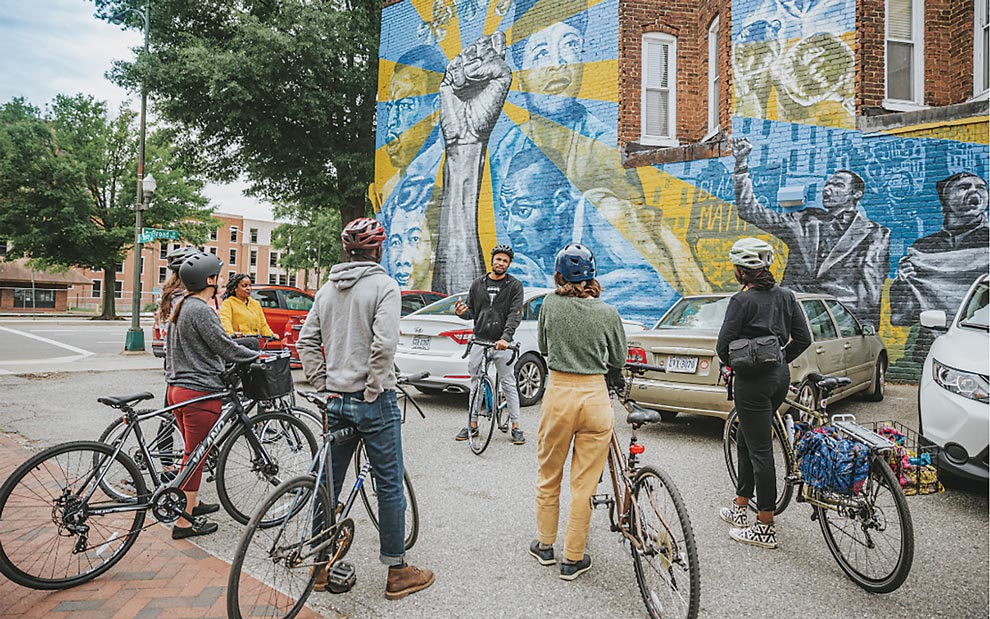
Mending Walls in Popular Media
When Pam Hervey, producer at Fuel and 19RED, heard about Mending Walls, she was intrigued. Hervey had previously met Glass while working on a pilot program for VPM’s The Art Scene.
What began as a typical documentation of a process became a passion project for Pam Hervey and her husband Todd, as producers/directors, and George Parker, associate producer. From May until October of 2020, a crew followed Glass and the Mending Walls artists as they talked through concepts for walls, prepared sites, collaborated with volunteers, and painted on lifts around Richmond.
Recalling a conversation she had had with Glass about the impermanence of public art – “Walls do get painted over,” said Glass – Hervey says she was driven by a desire to preserve the Mending Walls artwork for posterity.
“If something happens to these murals, I want people to be able to reference what it looked like and what that experience was like. And not just for art’s sake, but also for the sake of the meaning of the mission of the project itself,” Hervey says. “I think it was just very, very important to show how these people all came together.”
Families can watch the Emmy-award winning film, Mending Walls: The Documentary, on VPM here in Central Virginia, but also on any PBS station across the country distributed by American Public Television. According to Hervey, the documentary has one of the highest clearance rates, meaning it is available on more than 90 percent of PBS stations.
The collaborating artists’ conversations were a resource for another form of popular media as well. The Mending Walls Podcast is available widely on podcast platforms. “The podcast is a deep dive with the artists about the process, conversations, and challenges for a behind-the-scenes peek at what was going on,” says Glass.
Hervey acknowledges that working on the documentary changed the way she views the community and the way she interacts with people. “I learned the same things that we hoped the artists learned from each other. And, quite frankly, I continue to learn from it. Because every time we keep talking about it, I remember things,” says Hervey.
Mending Walls Is a Book
By the end of 2020, the public art project had been documented with more than 2,000 pictures by photographers Brenda Soque and Katrina Jones. Much like Hervey, who thought about the additional details that could be shared, Glass and Jones set out to produce a coffee table-style book.
Working with publisher Ward Tefft of NoHow Books and editor Sara Marsden, Mending Walls – A Healing Public Art Project: The Origin Story is filled with photographs, insight from participating artists, and QR codes for easy access to each podcast. Published in May 2023, the book is available at Virginia Museum of Fine Arts (VMFA), Virginia Museum of History and Culture (VMHC), The Book Bar, Shelf Life, World of Mirth, and other local retailers.
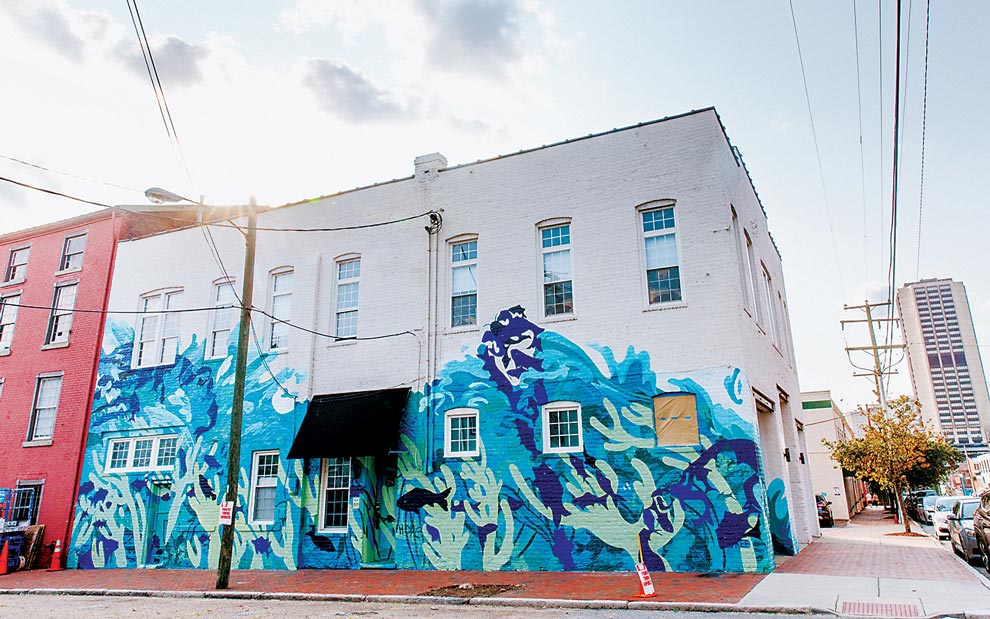
Connecting with Community
Tours of the Mending Wall murals, first on bikes, and later, on foot and by bus, have become an important way for people to see the artwork and continue to engage in conversation. At each Mending Walls mural, viewers can access the website and podcasts via plaques with QR codes to learn more about the artists and their processes. The murals have attracted tour groups of all types – corporations, educators, churches, and conferences. Self-guided tours can be generated by visiting the website MendingWallsRVA.com.
In addition to tours, educators use the murals as a tool. Through a partnership with VPM and the University of Richmond’s Partner in the Arts, a workshop for local teachers explores how to build empathy, connection, and collaboration within their classrooms. Registration for the free workshop also provides access to additional content, like a participant’s guide with questions, prompts, and activities for educators to use with their students.
As Glass notes, “People are still finding out about Mending Walls and looking to the project because it aligns with discussions they are having in their families, offices, or classrooms.”
Impact of Public Art
Whether folks see the Mending Walls murals for themselves, watch the documentary, listen to the podcast, or pick up the coffee-table book, area families will be affected by the Mending Walls murals for years to come.
Earlier this fall, Herr and Richardson-Keys reunited to shoot a short video for Run Richmond 16.19, presented by the Djimon Hounsou Foundation, Sports Backers, and the Black History Museum. The run and walk, which took place on September 30, traveled by historical spaces and public art in Richmond that are reflective of 400 years of Black history – including the I Can/t Breathe mural.
Revisiting how it feels three years later to have collaborated on a mural for Mending Walls, Herr says, “I’m so proud of the rich conceptual vein that [Amari and I] delved into. It was our goal to create something that addressed the problems of the past and present, while imagining the future.”
Like a lot of artwork, I Can/t Breathe is rich in metaphor, and according to Herr, there are elements that may not add up for every viewer. “I think the energy of our message shines through to most anyone.”


